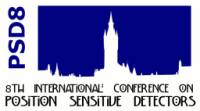Speaker
Dr
David Parker
(University of Birmingham)
Description
The technique of positron emission particle tracking (PEPT), developed at Birmingham in the early 1990s, enables a radioactively-labelled tracer particle to be accurately tracked as it moves between the detectors of a positron camera. In 1999 the original Birmingham positron camera, which consisted of a pair of MWPCs, was replaced by a system comprising two NaI(Tl) gamma camera heads operating in coincidence. This system has been successfully used for PEPT studies of a wide range of granular and fluid flow processes. More recently a modular positron camera has been developed using a number of the BGO block detectors from standard PET scanners (CTI ECAT 930 and 950 series). This camera has flexible geometry, is transportable, and is capable of delivering high data rates. This paper presents initial experience of its use in a range of geometries and applications.
Author
Dr
David Parker
(University of Birmingham)

